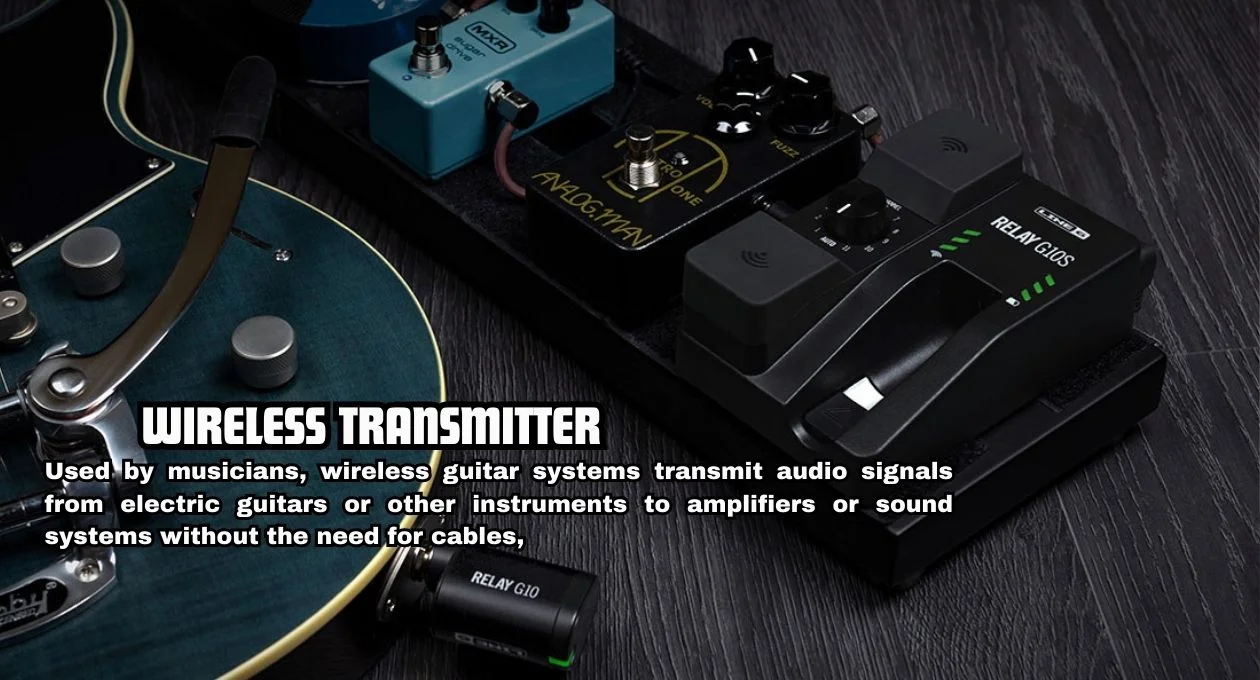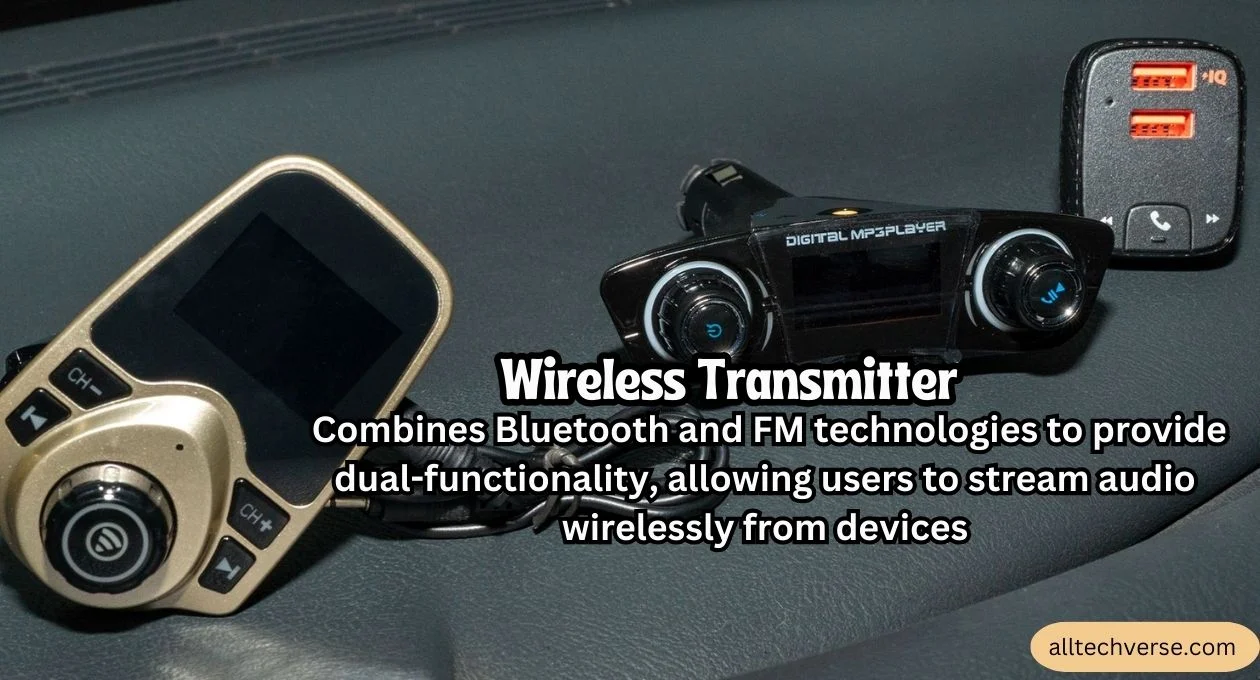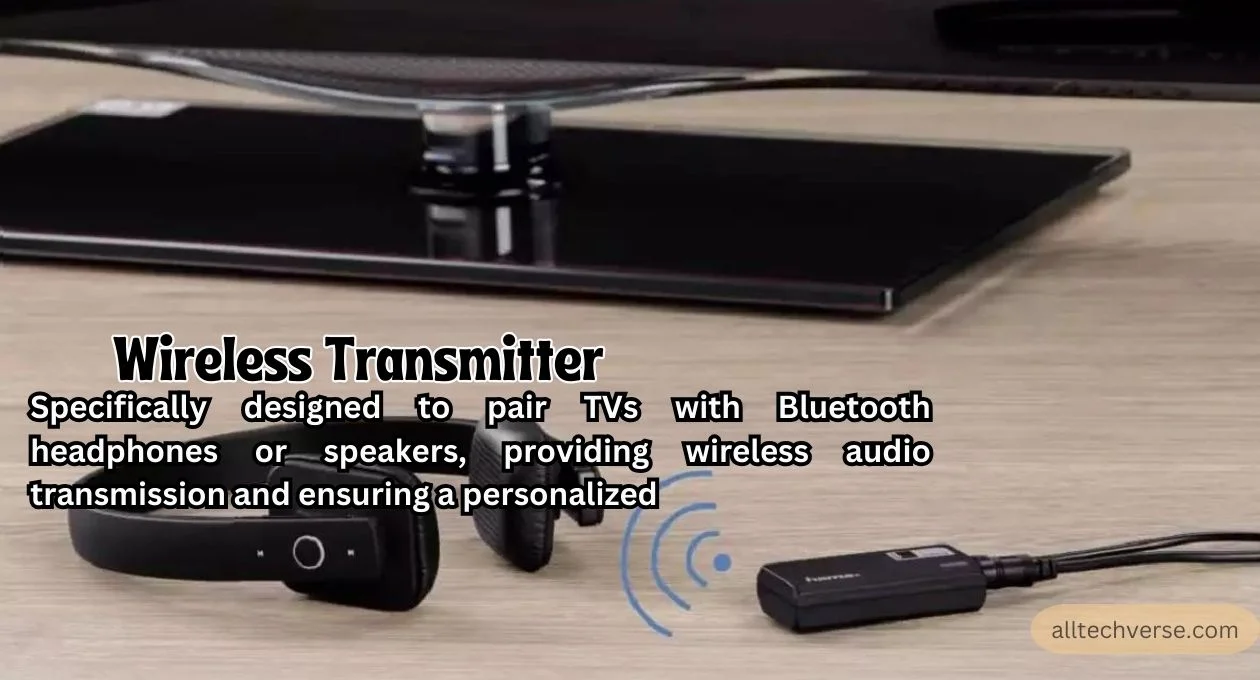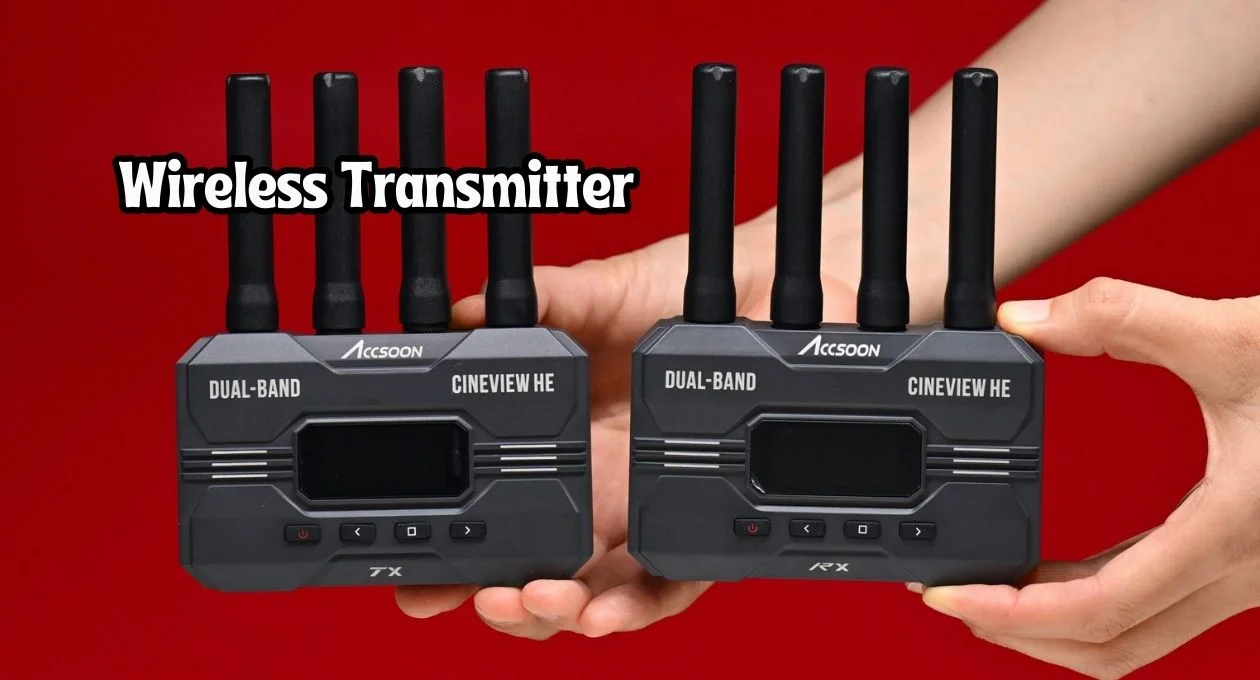In the world of modern electronics, wireless transmitters play a crucial role in facilitating seamless connectivity and enhanced user experience across various devices. Let’s delve into the intricacies of different types of wireless transmitters and their applications.
Wireless transmitters operate by converting electrical signals into radio waves, which are then transmitted to a receiver that decodes them back into electrical signals. This wireless communication technology allows devices such as smartphones, laptops, and smart home gadgets to connect and share information without the need for physical cables. An example of this technology in action is Bluetooth, which enables wireless communication over short distances, making it ideal for connecting peripherals like keyboards, mice, and headphones to computers and mobile devices.
The applications of wireless transmitters extend beyond consumer electronics into industrial and medical fields. In industrial settings, wireless transmitters are used for monitoring and controlling machinery, improving efficiency and safety by providing real-time data. In the medical field, wireless technology is employed in patient monitoring systems, allowing healthcare professionals to track vital signs remotely and respond quickly to any concerns. The versatility and widespread adoption of wireless transmitters underscore their importance in our increasingly connected world.
Bluetooth Radio Transmitter for Car
A Bluetooth radio transmitter for cars enables wireless audio streaming from mobile devices to car stereo systems, eliminating the need for traditional wired connections and enhancing convenience during travel.
Wireless transmitters are also pivotal in the realm of home automation. By integrating wireless technology with smart home devices like thermostats, lighting systems, and security cameras, users can control and monitor their home environment remotely via smartphones or voice commands. This enhances comfort, security, and energy efficiency, as homeowners can easily adjust settings or receive real-time alerts, regardless of their physical location.
Another significant advantage of wireless transmitters is their role in enhancing communication in remote or inaccessible areas. For instance, in disaster-stricken regions or rural locales where conventional infrastructure is lacking, wireless transmitters facilitate reliable communication networks. This capability is crucial for coordinating emergency responses, conducting field research, and ensuring connectivity for communities that otherwise might be isolated.
FM Transmitter Auto
Similar to FM radio transmitters for cars, these devices facilitate wireless audio transmission, making it easy to enjoy music or podcasts while driving without the hassle of cables.
As wireless transmitter technology continues to evolve, we are witnessing a growing trend towards miniaturization and increased efficiency. These advancements not only enhance the performance of individual devices but also pave the way for innovative applications in wearable technology. For example, smartwatches and fitness trackers rely heavily on wireless transmitters to provide real-time health data and seamless integration with smartphones, promoting a more connected and health-conscious lifestyle.

Furthermore, wireless transmitters are playing an essential role in the advancement of autonomous vehicles. By enabling real-time communication between vehicles, traffic infrastructure, and central control systems, these technologies help improve road safety and efficiency. Autonomous cars use wireless transmitters to exchange information about traffic conditions, potential hazards, and optimal routes, ultimately leading to smoother and more reliable transportation systems.
FM Transmitter for Car
A device that wirelessly broadcasts audio from smartphones or other devices to car radios via FM signals, providing flexibility and convenience for in-car entertainment.
The integration of wireless transmitter technology in educational settings is revolutionizing the way students learn and educators teach. Interactive lessons, powered by wireless devices, enable real-time feedback and engagement, fostering a more dynamic and inclusive learning environment. For instance, teachers can use tablets connected via wireless transmitters to share multimedia content with students, enhancing comprehension and making learning more interactive and enjoyable.
Moreover, the healthcare industry is benefiting immensely from the advancements in wireless transmitter technology. Telemedicine, which relies on wireless connectivity, allows patients to consult doctors remotely, reducing the need for travel and making healthcare more accessible to people in rural areas. Wearable health devices that monitor vital signs and transmit data to healthcare providers enable continuous monitoring and timely intervention, improving patient outcomes and overall healthcare quality.
Wireless Guitar System
Used by musicians, wireless guitar systems transmit audio signals from electric guitars or other instruments to amplifiers or sound systems without the need for cables, offering freedom of movement on stage.
Wireless transmitters are crucial in enhancing public safety systems. These devices facilitate seamless communication among emergency responders, allowing for quick coordination during crises. By providing real-time data transmission, wireless transmitters ensure that first responders have the information they need to make informed decisions, ultimately leading to more efficient and effective emergency responses.

The agriculture industry is also leveraging wireless transmitter technology to improve productivity and efficiency. Farmers use these devices to monitor soil conditions, track livestock, and manage irrigation systems remotely. By gathering and transmitting critical data, wireless transmitters enable precision agriculture, allowing farmers to optimize resources and increase yields while reducing environmental impact.
HDMI Wireless Transmitter and Receiver
A technology allowing wireless transmission of HDMI video and audio signals between devices such as TVs, projectors, and gaming consoles, eliminating cable clutter and offering flexibility in home entertainment setups.
The use of wireless technology in construction is another area where significant advancements are taking place. Construction sites now employ wireless transmitters to control and monitor machinery remotely, enhancing safety and operational efficiency. These devices allow workers to manage heavy equipment from a safe distance, reducing the risk of accidents and improving overall site productivity.
Additionally, wireless transmitters are playing a pivotal role in environmental monitoring and conservation efforts. Sensors equipped with wireless communication capabilities are used to track wildlife, monitor air and water quality, and detect environmental hazards. This real-time data collection helps researchers and conservationists make informed decisions, ultimately contributing to the preservation and protection of our natural ecosystems.
Bluetooth and FM Transmitter
Combines Bluetooth and FM technologies to provide dual-functionality, allowing users to stream audio wirelessly from devices like smartphones to car stereos or home audio systems.
The healthcare industry is witnessing a revolution with the integration of advanced wireless technologies. These innovations not only facilitate patient monitoring and data transmission but also enable remote diagnostic capabilities, bridging the gap between healthcare providers and patients in remote locations. Additionally, the use of wireless medical devices ensures real-time data exchange, leading to more accurate diagnostics and timely interventions, ultimately enhancing patient outcomes and reducing healthcare costs.

In the realm of education, wireless transmitters are transforming the learning environment. Interactive whiteboards, tablets, and other digital tools connected through wireless networks are creating more dynamic and engaging classroom experiences. By enabling seamless connectivity and access to digital resources, wireless technology supports collaborative learning and provides students with the opportunity to engage in various educational activities, fostering a more enriched and interactive educational experience.
Bluetooth FM Transmitter
Utilizes Bluetooth technology to transmit audio signals wirelessly to FM radio frequencies, enabling seamless integration of mobile devices with car stereo systems or older audio equipment.
The sports industry has greatly benefited from the advent of wireless transmitter technology. Coaches and athletes now utilize wearable devices to monitor performance metrics in real-time, allowing for more precise training and recovery programs. This level of insight into physical performance ensures that teams can optimize their strategies and improve overall efficiency on the field.
Furthermore, wireless transmission technology is enhancing our day-to-day communication needs. Modern smartphones, equipped with advanced wireless capabilities, enable seamless connectivity and data sharing across various platforms. This constant connectivity not only facilitates social interactions but also supports business operations, providing a foundation for remote work and global collaboration.
TV Transmitter Bluetooth
Specifically designed to pair TVs with Bluetooth headphones or speakers, providing wireless audio transmission and ensuring a personalized viewing experience without compromising audio quality.
The healthcare sector is also seeing significant advancements due to wireless technology. Wearable health monitors and sensors now allow for continuous tracking of vital signs such as heart rate, blood pressure, and glucose levels. This real-time data collection helps healthcare professionals make better-informed decisions, improves patient outcomes, and supports preventative care measures.

Moreover, wireless technology is making waves in the education sector. Virtual classrooms and e-learning platforms rely heavily on wireless networks to provide students with access to a wide range of online resources, interactive content, and collaborative tools. This fosters an inclusive learning environment where students can seamlessly engage with their peers and instructors from virtually anywhere.
Bluetooth FM Transmitter for Car
A compact device that combines Bluetooth and FM transmission technologies, enabling wireless audio streaming from smartphones to car stereo systems via FM radio frequencies, enhancing in-car entertainment options.
Wireless technology has also significantly impacted the field of logistics and supply chain management. Real-time tracking of shipments using wireless communication devices allows businesses to monitor the location and condition of goods in transit, ensuring timely deliveries and mitigating risks of loss or damage. This enhanced visibility across the supply chain leads to more efficient inventory management and better customer service.
Similarly, the hospitality industry is leveraging wireless technology to elevate guest experiences. Smart room controls, powered by wireless transmitters, allow guests to adjust lighting, temperature, and entertainment systems via their smartphones. These advancements not only provide personalized comfort but also enable efficient energy use within hotel operations, contributing to a more sustainable hospitality model.
Bluetooth Headphone Jack Transmitter
Allows non-Bluetooth audio sources with headphone jacks to transmit audio wirelessly to Bluetooth headphones or speakers, offering flexibility and convenience in audio playback.
In the automotive industry, wireless technology is revolutionizing vehicle design and functionality. Advanced driver assistance systems (ADAS) use wireless communication to interact with sensors, cameras, and radar to enhance vehicle safety and automate certain driving tasks. These developments are paving the way for autonomous vehicles, promising to reduce accidents and increase road safety.
In smart cities, wireless technology plays a crucial role in creating interconnected urban environments. From intelligent traffic systems that optimize flow and reduce congestion to public Wi-Fi networks that provide connectivity to residents and visitors, these advancements improve the quality of urban life. Additionally, smart grids utilizing wireless technology ensure efficient energy distribution, helping cities to manage resources better and move towards sustainability.
Headphone Jack Bluetooth Transmitter
Converts audio signals from devices with headphone jacks into Bluetooth signals, enabling wireless transmission to Bluetooth headphones or speakers, ideal for devices lacking native Bluetooth support.
Wireless technology continues to transform the retail landscape, providing innovative solutions that enhance customer satisfaction and operational efficiency. Personalized marketing through mobile apps and Bluetooth beacons allows retailers to deliver targeted promotions and discounts directly to shoppers’ smartphones, creating a more engaging shopping experience. This level of customization not only increases sales but also fosters stronger customer loyalty.
Furthermore, the integration of wireless technology in home automation systems is rapidly gaining popularity. Homeowners can now control and monitor various aspects of their homes, such as lighting, security, and climate, through mobile applications, regardless of their location. Smart home devices, interconnected via wireless networks, offer increased convenience, enhanced security, and energy efficiency, contributing to a smarter, more sustainable way of living.
Wireless Guitar Plug
A compact transmitter that plugs into electric guitars or instruments, wirelessly transmitting audio signals to amplifiers or audio systems, facilitating unrestricted movement for musicians during performances.
The integration of wireless technology in agricultural practices is helping to drive the next phase of farming innovations. Farmers are now using wireless sensors to monitor soil conditions, crop health, and weather patterns, allowing them to make informed decisions and optimize their yields. Precision agriculture, supported by these technologies, is not only boosting productivity but also promoting sustainable farming practices by minimizing waste and reducing the need for chemical inputs.
In the entertainment industry, wireless technology is pushing the boundaries of how content is produced, distributed, and consumed. Streaming services rely on robust wireless networks to deliver high-quality video and audio to viewers worldwide, eliminating the need for physical media. Additionally, advancements in wireless audio transmission are enabling seamless live performances and events, where artists and technicians can coordinate without the constraints of wired connections, enhancing both production quality and audience experience.
Bluetooth Transmitter for Headphone Jack
Allows devices with headphone jacks to transmit audio wirelessly to Bluetooth headphones or speakers, expanding connectivity options and enhancing user convenience.
The healthcare industry is also experiencing transformative changes due to wireless technology. Medical practitioners are now able to monitor patients’ vital signs remotely through wearable devices, ensuring continuous health tracking and early detection of potential issues. This real-time data transmission facilitates timely medical interventions, improving patient outcomes and reducing the burden on healthcare facilities.
Moreover, wireless technology is enhancing security systems in both residential and commercial settings. Advanced wireless sensors and cameras can be integrated into a comprehensive security network, offering real-time surveillance and alerts. These systems can be easily monitored via smartphones or other connected devices, providing peace of mind and safeguarding property against unauthorized access or potential threats.
Wireless Guitar Cable
A cable-free solution for electric guitars and musical instruments, enabling musicians to perform without being tethered by traditional cables, offering freedom of movement on stage.
Wireless technology is also making waves in the education sector, where it is enhancing learning environments and facilitating innovative teaching methods. Schools and universities are integrating wireless networks to support interactive learning tools, virtual classrooms, and remote education. This connectivity allows students to access a wealth of digital resources and provides educators with new avenues for engaging students, irrespective of their physical location.
In the realm of logistics and supply chain management, wireless technology enables real-time tracking of goods and assets. Through the use of RFID tags and GPS-enabled devices, companies can monitor the movement of products from manufacturing to delivery, ensuring optimal efficiency and minimizing delays. This increased visibility not only streamlines operations but also contributes to better inventory management and customer satisfaction.
FAQs
Q1: What is a Headphone Jack Bluetooth Transmitter?
A Headphone Jack Bluetooth Transmitter converts audio signals from devices with headphone jacks into Bluetooth signals. This enables wireless transmission to Bluetooth headphones or speakers, making it ideal for devices that lack native Bluetooth support.
Q2: How does a Wireless Guitar Plug work?
A Wireless Guitar Plug is a compact transmitter that plugs into electric guitars or other instruments. It wirelessly transmits audio signals to amplifiers or audio systems, allowing musicians to move freely without being restricted by traditional cables during performances.
Q3: What are the benefits of integrating wireless technology in agriculture?
Wireless technology in agriculture allows for the use of sensors to monitor soil conditions, crop health, and weather patterns. This data helps farmers make informed decisions, optimize yields, and promote sustainable practices by minimizing waste and reducing chemical inputs.
Q4: How is wireless technology transforming healthcare?
In healthcare, wireless technology enables remote monitoring of patients’ vital signs through wearable devices. This facilitates continuous health tracking, early detection of potential issues, and timely medical interventions, leading to improved patient outcomes and reduced strain on healthcare facilities.
Q5: Can wireless technology improve security systems?
Yes, advanced wireless sensors and cameras can be integrated into comprehensive security networks. These systems offer real-time surveillance and alerts, which can be monitored via smartphones or other connected devices, providing enhanced security and peace of mind for both residential and commercial properties.
Q6: What impact does wireless technology have on education?
Wireless technology enhances education by supporting interactive learning tools, virtual classrooms, and remote education. It provides students with access to digital resources and offers educators new ways to engage with students, regardless of their physical location.
Q7: How does wireless technology benefit logistics and supply chain management?
In logistics, wireless technology enables real-time tracking of goods and assets through RFID tags and GPS-enabled devices. This ensures optimal efficiency, minimizes delays, streamlines operations, and improves inventory management and customer satisfaction.

Conclusion
Wireless transmitters la bhal l nhala revolutionize connectivity by eliminating the constraints of cables, offering enhanced mobility, convenience, and flexibility across various applications—from in-car entertainment to musical performances and home audio setups. Understanding the capabilities and applications of different wireless transmitter technologies empowers users to leverage modern connectivity solutions for improved user experiences and seamless integration of devices in daily activities.
The continuous evolution of wireless technology is exemplifying its capability to shape and enhance everyday experiences. From simplifying tasks with smart home devices to enabling fluid communication in professional contexts, the swift and reliable nature of wireless connections is revolutionizing how we engage with the world. This technology’s ubiquitous presence has become fundamental in facilitating a more connected and efficient lifestyle.
Foe More Information Keep Visiting AllTechverse.



